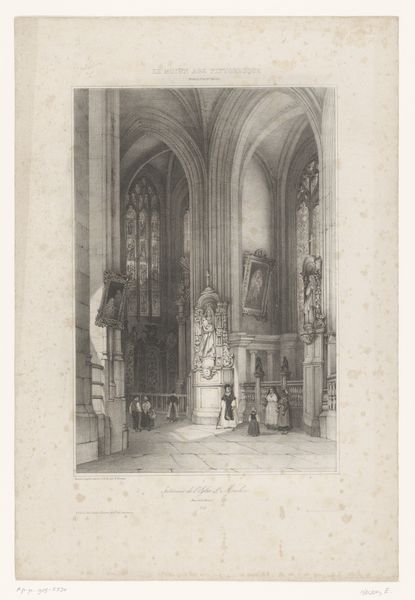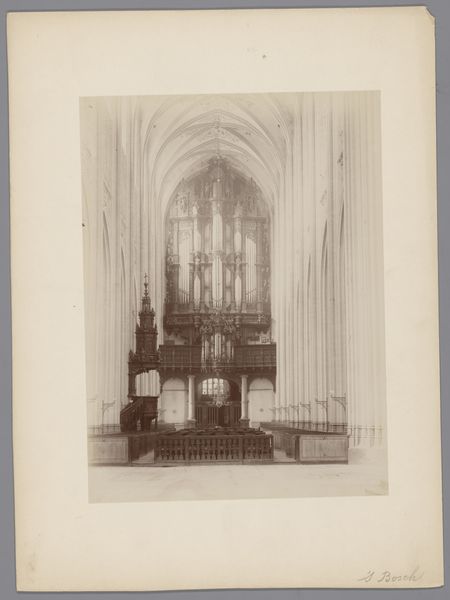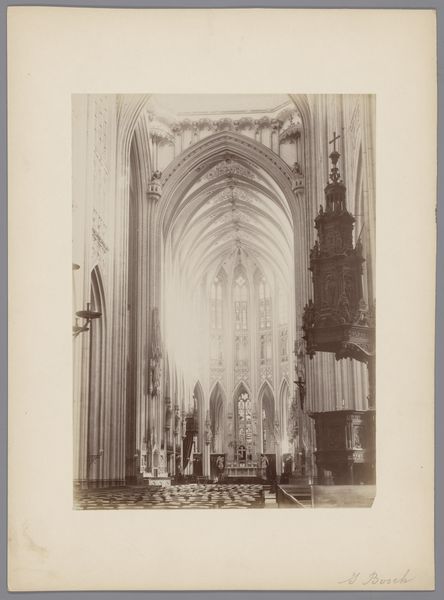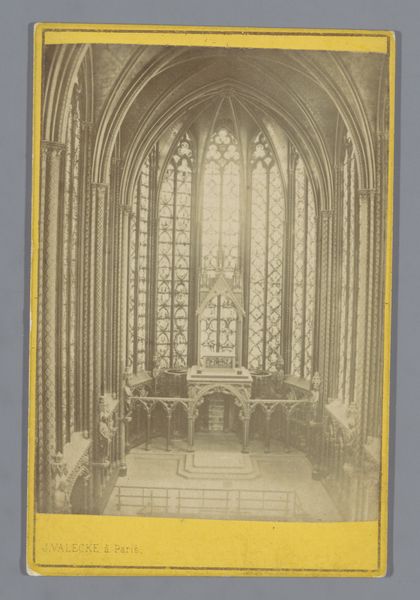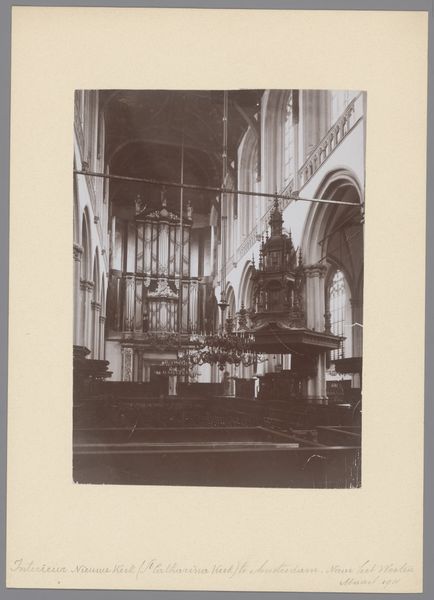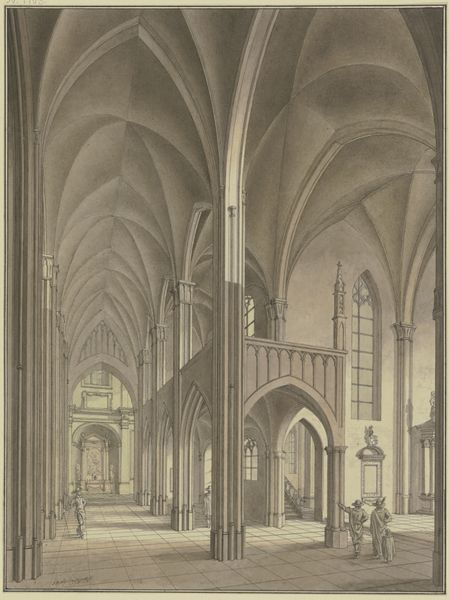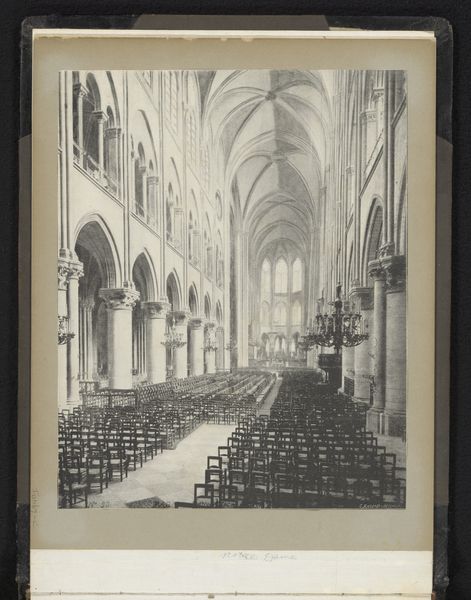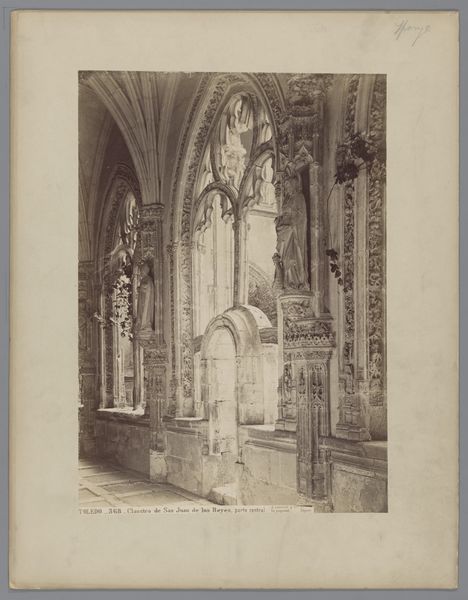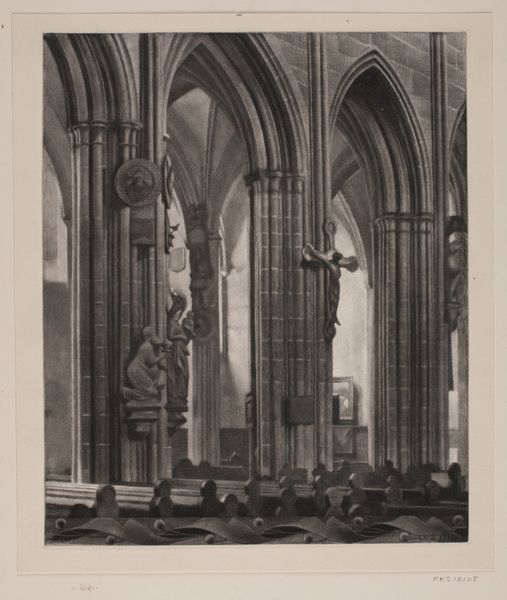
Dimensions: height 105 mm, width 64 mm
Copyright: Rijks Museum: Open Domain
Editor: Here we have Joseph Kirsch Fils’ gelatin silver print, "Interior of Saint Paul's Cathedral in Liège," dating from the late 19th century. It's quite striking how the photograph captures the Gothic architecture, and the repeating forms within the cathedral. What jumps out to you? Curator: What intrigues me is how this print freezes a moment in the industrialized reproduction of sacred space. It represents the confluence of architectural labor – the stone masons, the stained-glass artisans, the carpenters – and the then-emerging photographic industry. This wasn't about simply representing beauty. This image provided affordable access. Who could purchase this image, and what kind of experience were they consuming? Editor: So, you're saying this print democratized the cathedral’s image, shifting its value from purely spiritual to something accessible as a commodity? Curator: Precisely. The mass production of these images allowed individuals, removed from the physical space, to consume an idea, a version of gothic grandeur, fueling a social and cultural discourse about heritage, religion and technology. How does the image relate to changes within Liège? Were other industrial transformations happening at the time? Editor: I didn’t think about that – Liège was becoming heavily industrial around this time, so maybe the cathedral was something to hold onto? Looking at it that way is quite a new way of approaching architecture! Curator: Indeed! And it all stems from how the materials and the method of reproduction interact with the socio-economic context. The act of photographic duplication changes the very essence of what a cathedral, traditionally a symbol of power, represents. Editor: Fascinating, I’ll definitely keep material conditions in mind going forward. Thank you for shedding some light.
Comments
No comments
Be the first to comment and join the conversation on the ultimate creative platform.
